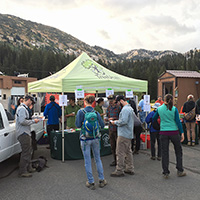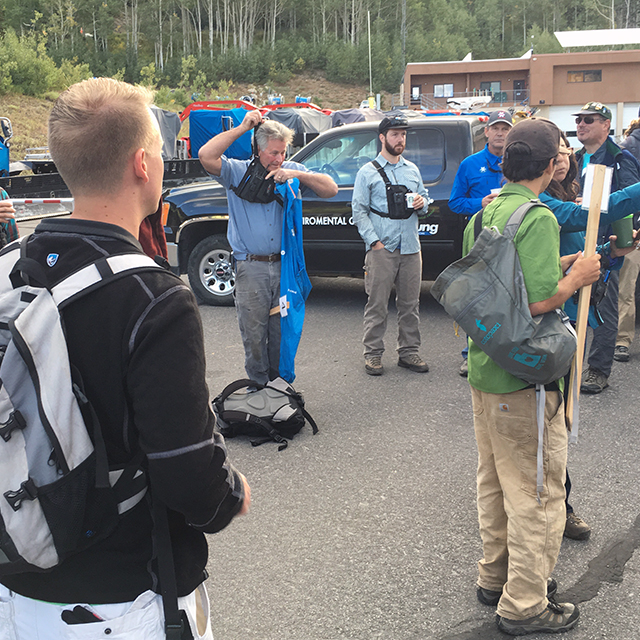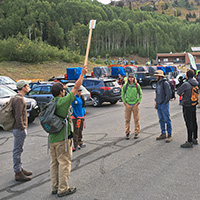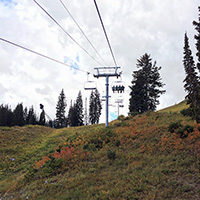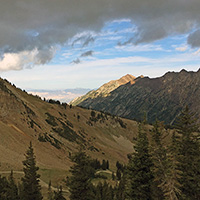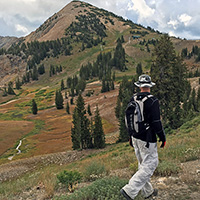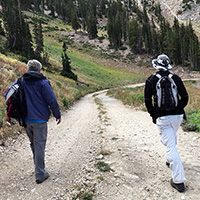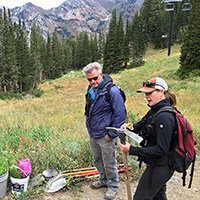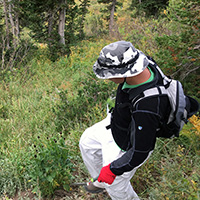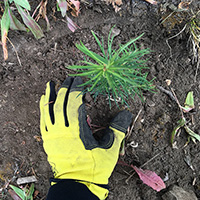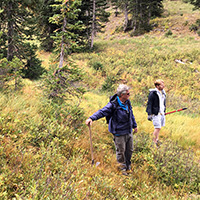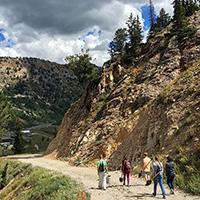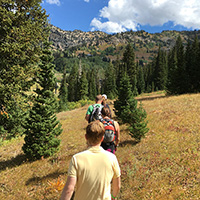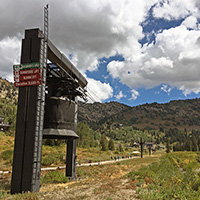You’re accessing archived content
This is archived content from the UIT website. Information may be outdated, and links may no longer function. Please contact stratcomm@it.utah.edu if you have any questions about archived content.
ISO's Udy and TreeUtah: Part of a reforestation revolution
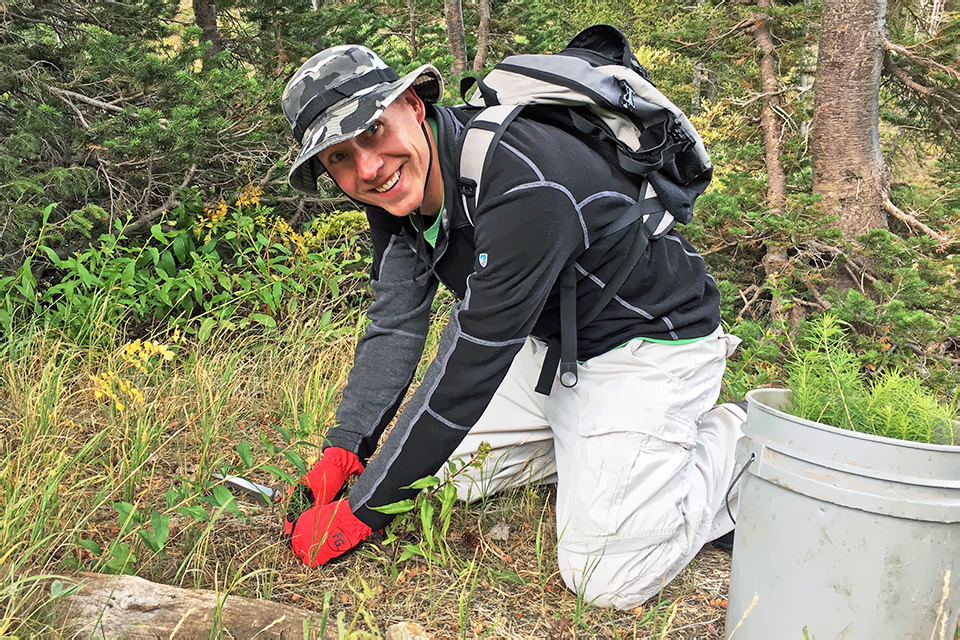
UIT Data Security Analyst Dustin Udy plants a tree in Alta, Utah.
Thick stands of trees line state highway 210, giving way to overlooks of rippling streams and craggy peaks. At first glance, you'd never know that Alta – Little Cottonwood Canyon's northernmost community – was home to two mining booms.
These days, Alta is associated with skiing, not silver. That visitors find little evidence of clear-cutting by pioneers and miners is a credit to organizations like TreeUtah and its predecessors.
Since its founding in 1990, TreeUtah has planted over 350,000 trees with the help of 135,000 volunteers – conscientious citizens like Dustin Udy, Information Security Office data security analyst and TreeUtah volunteer for more than two years.
"I love the outdoors and volunteering, and this pulls both of them together," said Udy, whose brother and two nieces have also volunteered with the organization. "What initially drew me to TreeUtah was their goal for better air quality in Utah and the quality of people working there. All of the employees and volunteers care about the environment and want to make sure the future has lots of trees."
In addition to being a regular volunteer, Udy is certified as a Volunteer Team Leader.
"We mostly make sure things are safe and the trees are planted correctly, [but] the volunteers are the ones who get to do the fun stuff like digging holes and planting trees," he said.
TreeUtah's first tree planting of the fall took place on a chilly, blustery morning September 3, 2016 at the Alta Ski Area. The event was sponsored and underwritten by the Alta Environmental Center, Young Automotive Group, Cottonwood Canyons Foundation, and Friends of Alta.
Udy and about 100 other volunteers signed in at the Albion Day Lodge, grabbed some snacks, and formed into groups. Their mission: go to the top of the mountain, plant 1,300 Douglas fir trees, then hike the equipment back down.
Trees are vital not only to the health of wildlife habitats, watersheds and resort operations, they're also a key factor in avalanche mitigation – a real problem in an area that averages 500 inches of annual snowfall.
The morning of the planting, volunteers trekked out to the Collins ski lift, which would carry them about 1,800 vertical feet to a summit 10,300 feet above sea level in the shadow of Mount Baldy. Groups spread out to pre-targeted planting zones where buckets of saplings and digging tools had been brought up the day before. Team leaders gave a safety briefing and offered tips on proper planting technique. The new trees, 8 to 10 inches tall, were to be clustered some 10 feet apart near prevailing stands in order to propagate existing growth.
Planting even small trees in a rugged environment is hard work, but it didn't diminish the camaraderie among volunteers. "What's up hippies?" one group would greet another. "Well, would you look at all these tree-huggers?" they'd respond.
Without groups like TreeUtah, the story of Alta might resemble that of so many mining towns: a resource-rich region draws industry and opportunists who pack up and go home when the mines inevitably close. Boomtown goes bust. Despite the odds, Alta instead emerged as a model of sustainable development in a fragile alpine ecosystem – a skier’s paradise that grows healthier year by year, tree by tree.
Being part of that legacy keeps Udy coming back.
"I mean, who wouldn't want to breathe fresh mountain air, sip some coffee, and watch the sunrise, before planting a forest for your kids or grandkids to enjoy?” he said.
To learn more about TreeUtah, upcoming plantings and community outreach events, visit treeutah.org.
See photos of the Alta tree planting below.
Photo credit: Dustin Udy and Jesse Drake
Node 4
Our monthly newsletter includes news from UIT and other campus/ University of Utah Health IT organizations, features about UIT employees, IT governance news, and various announcements and updates.

